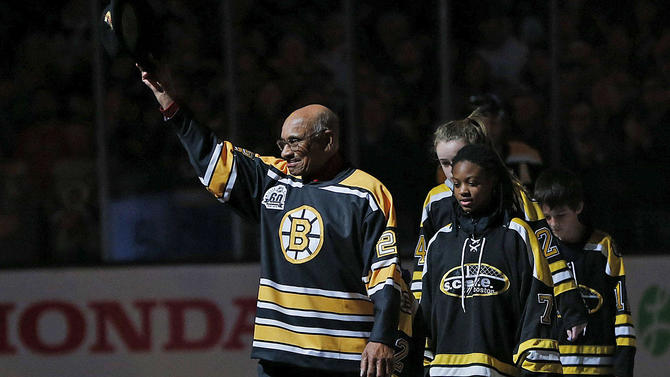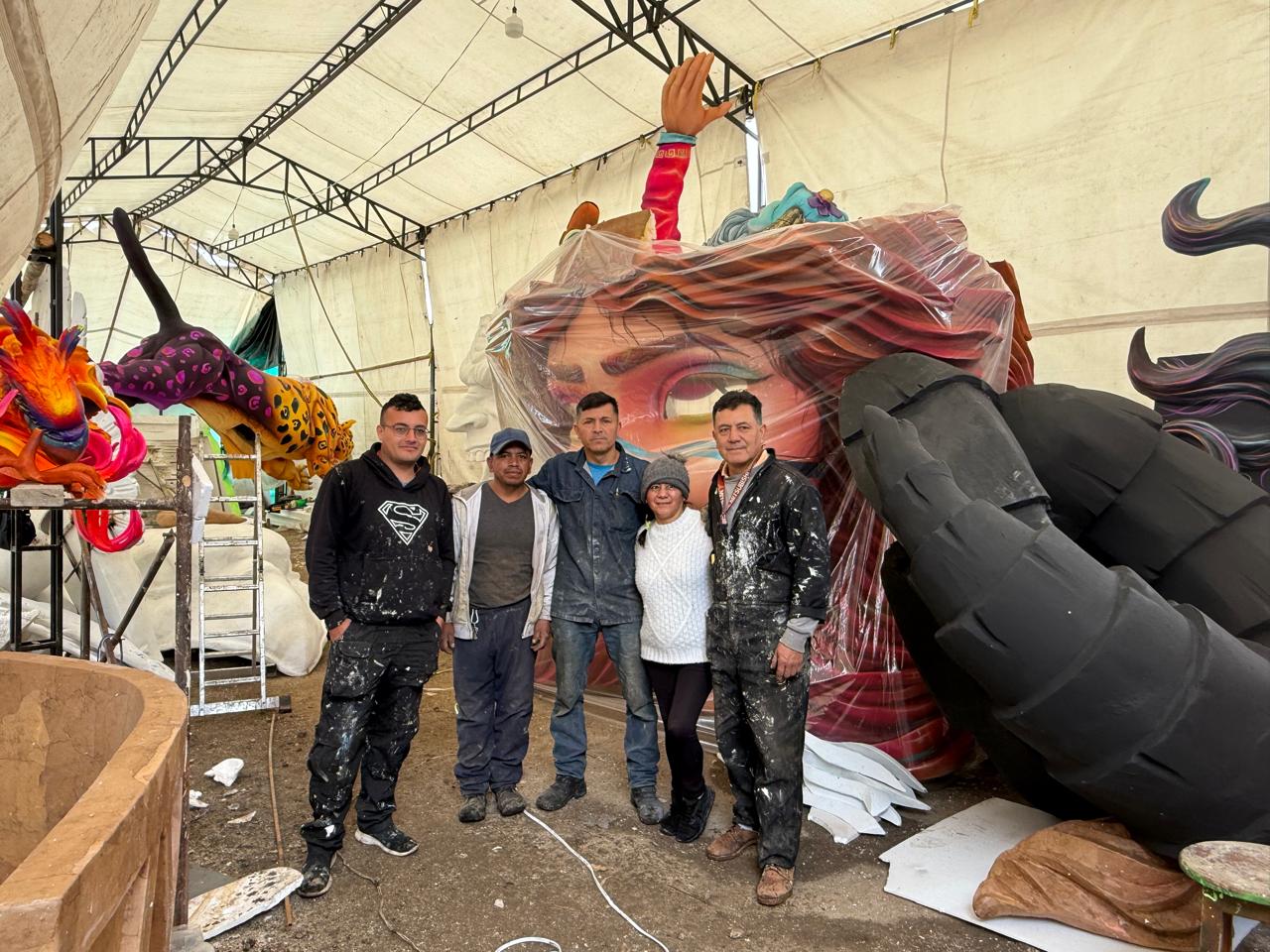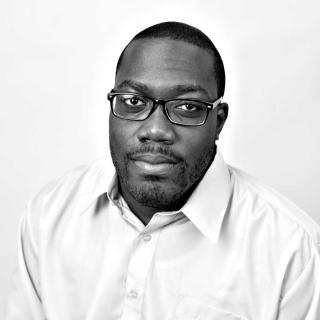
Willie O’Ree, NHL’s first Black player, gets jersey number retired
The Boston Bruins honored the legend who broke the color barrier with the team, by raising his No. 22 jersey up in the rafters during a ceremony on Jan. 18.
We often talk about the great Jackie Robinson for breaking the color barrier in Major League Baseball — the sport that has long been dubbed “America’s pastime” — on April 15, 1947.
Robinson’s distinction and impact on the baseball community will never be forgotten, and will remain in the history books for generations and centuries to come.
However, just over a decade later, a man by the name of Willie O’Ree broke the color barrier in the National Hockey League. On Jan. 18, 1958, O’Ree was called up from the Quebec Senior Hockey League’s Quebec Aces to play two games for the Boston Bruins, officially becoming the NHL’s first Black player.
The @NHLBruins will retire Willie O'Ree's No. 22 jersey tonight, on the 64th anniversary of him becoming the NHL's first Black player.
— SportsCenter (@SportsCenter) January 18, 2022
: @ESPNPlus | 7 PM ET pic.twitter.com/gtDkTSO2bH
O’Ree would play a total of 45 games in the NHL and the Bruins over the course of two non-consecutive seasons (1957-58, 1960-61), recording four goals and 10 assists, totaling 14 points.
On Jan. 18, 2022, exactly 64 years to the day of his NHL debut, the Bruins honored O’Ree by retiring his No. 22 jersey into the rafters at TD Garden.
"Looking up at the icons and legends hanging from the rafters, I never imagined my jersey would join them."
— ESPN (@espn) January 19, 2022
— Willie O'Ree ahead of his Bruins jersey retirement
(via @NHLBruins)pic.twitter.com/uQiwb4vNNE
As he reflects upon the names and numbers already in the rafters — names like Eddie Shore, Lionel Hitchman, Cam Neely and Ray Bourque — he thinks about the team’s long history of greatness.
“I never dreamed of my number being retired and put up in the rafters,” O'Ree told NHL.com prior to the jersey retirement ceremony. “All I wanted to do was play and try to be the best hockey player I could be.”
His No. 22 jersey now joins 11 other jersey numbers retired by the team.
Gotta See It: What a moment!
— Sportsnet (@Sportsnet) January 19, 2022
64 years after his @NHL debut, Willie O’Ree’s No. 22 has been sent to the rafters in recognition of his profound impact on the game of hockey.
Presented by @Charmin | #EnjoyTheGo pic.twitter.com/yeG9iw7FEs
Similar to Robinson, O’Ree’s entry into the NHL was not without unfortunate instances of racially charged attacks, slurs by other players and fans, and even violent targeted altercations on the ice. The latter incident resulted in O’Ree getting his two front teeth knocked out and his nose broken.
However, he refused to let those circumstances deter him. He’d later get traded to the Montreal Canadiens, who never gave him the opportunity to play in the NHL again.
While his NHL career was relatively brief, he managed to put together a long career in the minor leagues — winning two scoring titles in the process — before officially retiring from the sport at the age of 43.
He was inducted into the Hockey Hall of Fame in 2018.
What makes his contributions to the sport more impactful is the fact that he did it while blind in one eye, the result of an errant puck to the eye in 1955.
RELATED CONTENT
“I lost sight in my right eye, and the doctor told me that I would be blind in my right eye and never play hockey again,” said O’Ree in a 2012 interview.
“When I got out of the hospital, I told myself, I just can’t accept the fact that this doctor is telling me I’ll never play hockey again. He doesn’t know the burning desire I have within myself, and the goals and dreams that I’ve set for myself of not only playing professional hockey but making it into the National Hockey League. So I started playing again,” he continued.
After O’Ree’s final NHL game in 1961, the league didn’t see its second Black player until Mike Marson was drafted by the Washington Capitals in 1974. He went on to play five total seasons in the NHL, for the Capitals and the Los Angeles Kings.
O’Ree’s entry into the NHL helped pave the way for Marson, and many of today’s Black NHL players, like Wayne Simmonds, who tweeted about just how much O’Ree means to him.
Tonight my idol Willie O’Ree’s number 22 will be hung from the rafters (Finally). I can’t stress how much Mr O’Ree has meant to me and millions of other BIPOC kids who love the game of hockey… Congratulations MR O’Ree
— Wayne Simmonds (@Simmonds17) January 18, 2022
O’Ree’s legacy and impact goes far beyond what he did on the ice, however.
In 1998, O’Ree became the director of youth development for the NHL/USA Hockey Diversity Task Force, a nonprofit program for diverse youth of color that encourages them to learn and play the sport of hockey. He serves as the NHL’s Diversity Ambassador, traveling all over the continent to schools and hockey programs to promote messages of inclusion, dedication and confidence.
Gerald Coleman, a former goalie for the Tampa Bay Lightning, became the first graduate of the NHL Diversity Program to be drafted into the NHL in 2003, making his debut in 2005.
In 2018, the NHL honored O'Ree's legacy by instituting the annual “Willie O’Ree Community Hero Award,” which awards “an individual who — through the game of hockey — has positively impacted his or her community, culture or society.”
When we think about Black pioneers who have broken the mold and opened doors for others within the sports arena and beyond, Willie O’Ree is an individual whose name must not be overlooked or forgotten.











LEAVE A COMMENT: